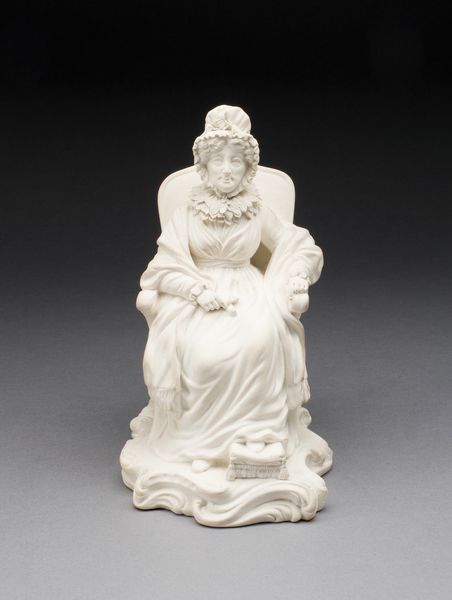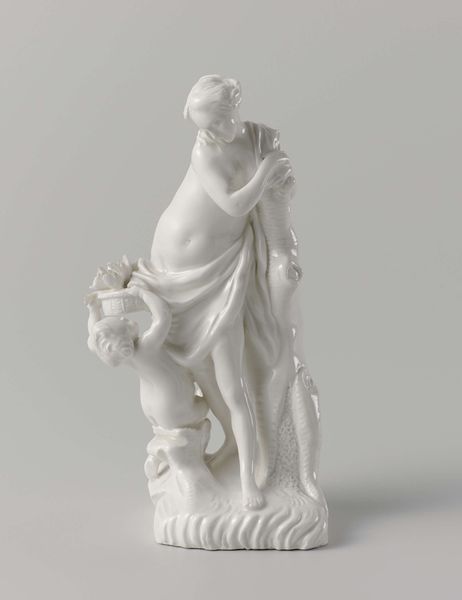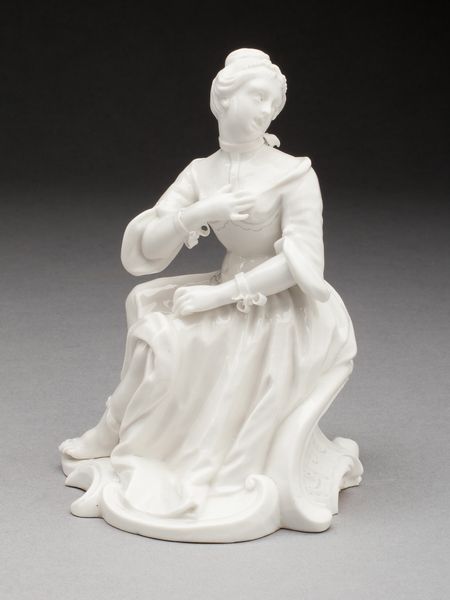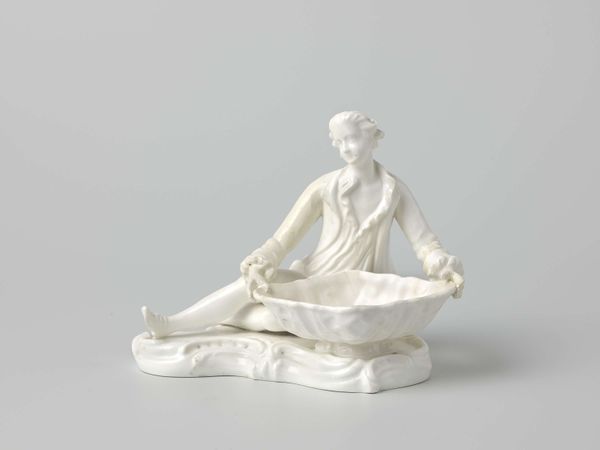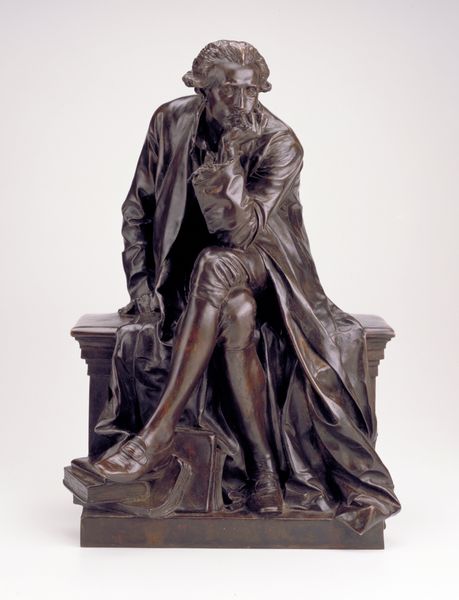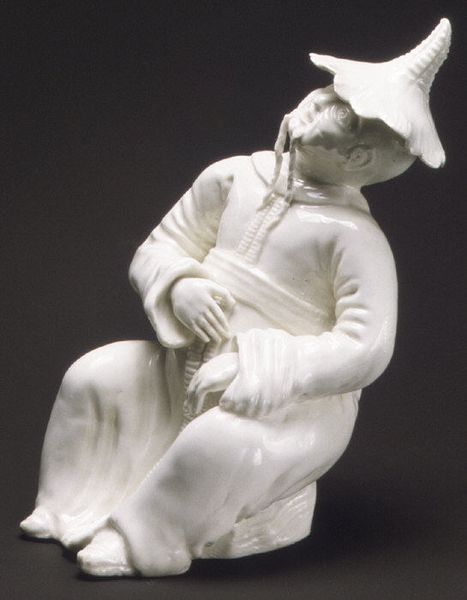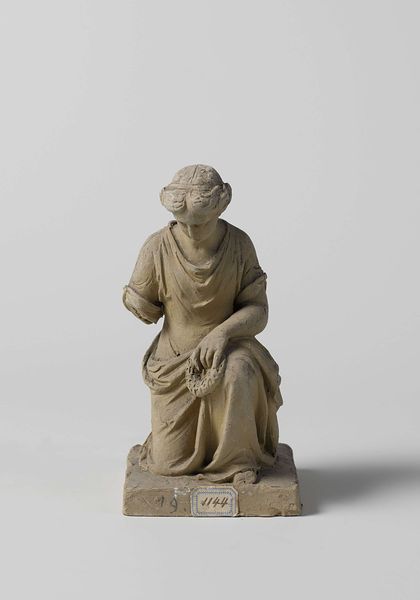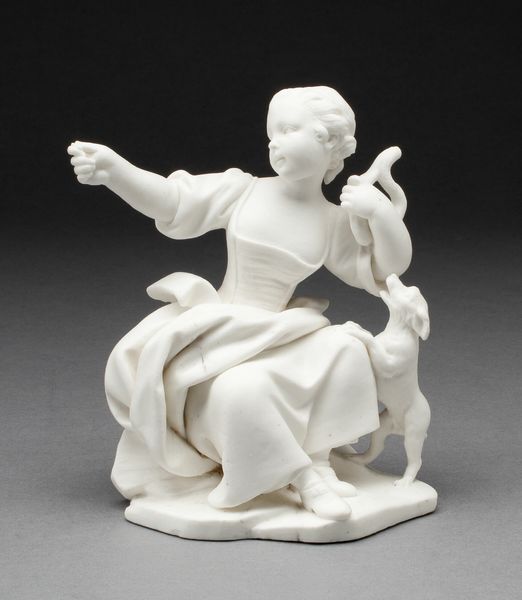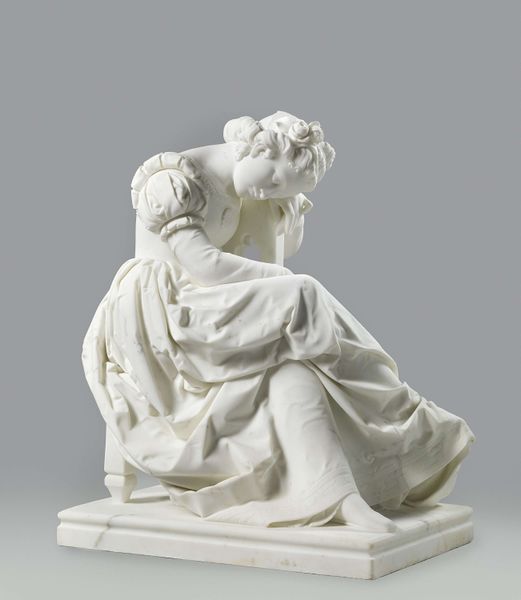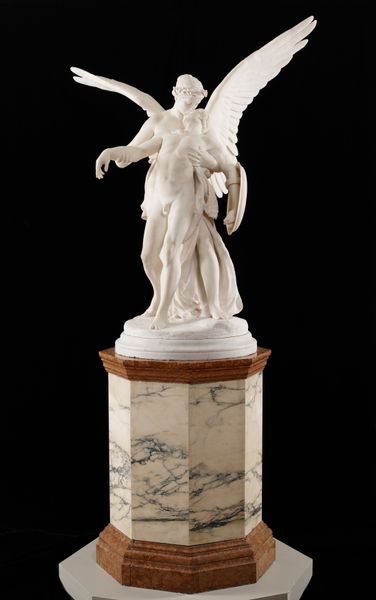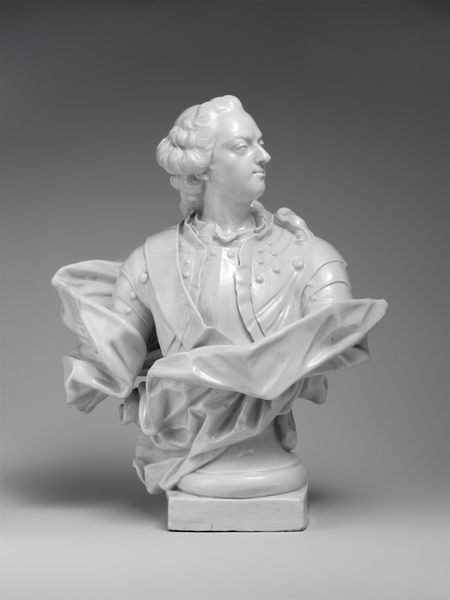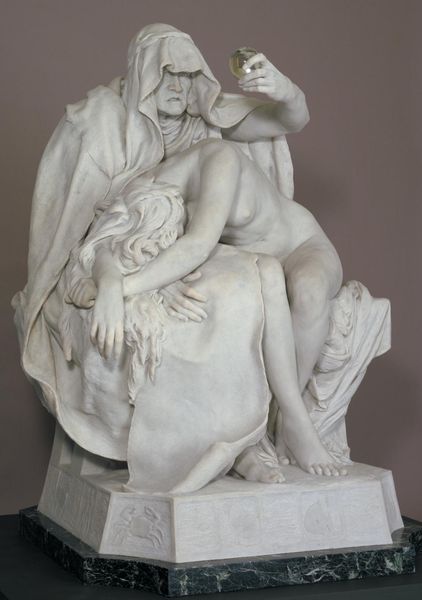
sculpture, marble
#
portrait
#
neoclacissism
#
sculpture
#
sculpture
#
academic-art
#
marble
Dimensions: 19 x 11 x 13 in. (48.26 x 27.94 x 33.02 cm)
Copyright: Public Domain
Editor: We're looking at "Prince Anatole Demidoff," a marble sculpture made in 1839 by Jean-Pierre Dantan, residing here at the Minneapolis Institute of Art. It has such a stately and imposing feel. I'm struck by how the sitter's body language almost seems relaxed despite the formal setting. What social context might inform a piece like this? Curator: This sculpture speaks volumes about the construction of power and the role of art in reinforcing social hierarchies. Think about the timing – 1839. Neoclassicism, with its emphasis on order, reason, and references to ancient Greece and Rome, was a popular mode for portraying figures of authority. Notice the marble. Who does marble benefit when showcasing them? Editor: I see what you mean. The crisp, white marble certainly evokes images of power and status. And it does give a sense of timelessness. Was this a common way to be depicted if you were a prince during that era? Curator: Precisely! But Dantan was also known for his caricatures. It's fascinating to consider the political implications. Is this sculpture a straightforward celebration of Demidoff’s status? Or does it contain subtle commentary? Did he have more in common with the people that admired his art than they knew? Editor: It's like the sculpture performs a function. Did pieces like this shape public perception of political figures? Curator: Absolutely! These images circulated, both physically and through reproductions. They contributed to a constructed image, a carefully curated representation of authority and class that shaped the way individuals were viewed and the public's understanding of social norms. And it solidified class separation as well. It even has a family crest carved in. What do you think that addition represents? Editor: The crest reinforces his family legacy. I’ll be thinking about that political shaping next time I come across a marble portrait! Curator: Indeed! And how institutions like this one continue to shape perspectives by the art we choose to showcase.
Comments
minneapolisinstituteofart about 2 years ago
⋮
Anatole Demidoff, Prince of San Donato (1812-70), was one of the foremost art collectors of the mid-19th century as well as a distinguished scientist and explorer. In this portrait by Jean-Pierre Dantan, Demidoff is shown with the attributes of his collecting -- a classically inspired ewer and basin -- and tools indicative of his scientific explorations -- a globe, telescope, compass, and maps. The books by his feet and the pamphlet in his hand bear the titles of his scholarly publications on the natural history, geology, and anthropology of Crimea and southern Russia: Voyage en Crimée, Valachie et Moldavie, Siberie, and Russie Meridonale et Crimée.
Join the conversation
Join millions of artists and users on Artera today and experience the ultimate creative platform.
